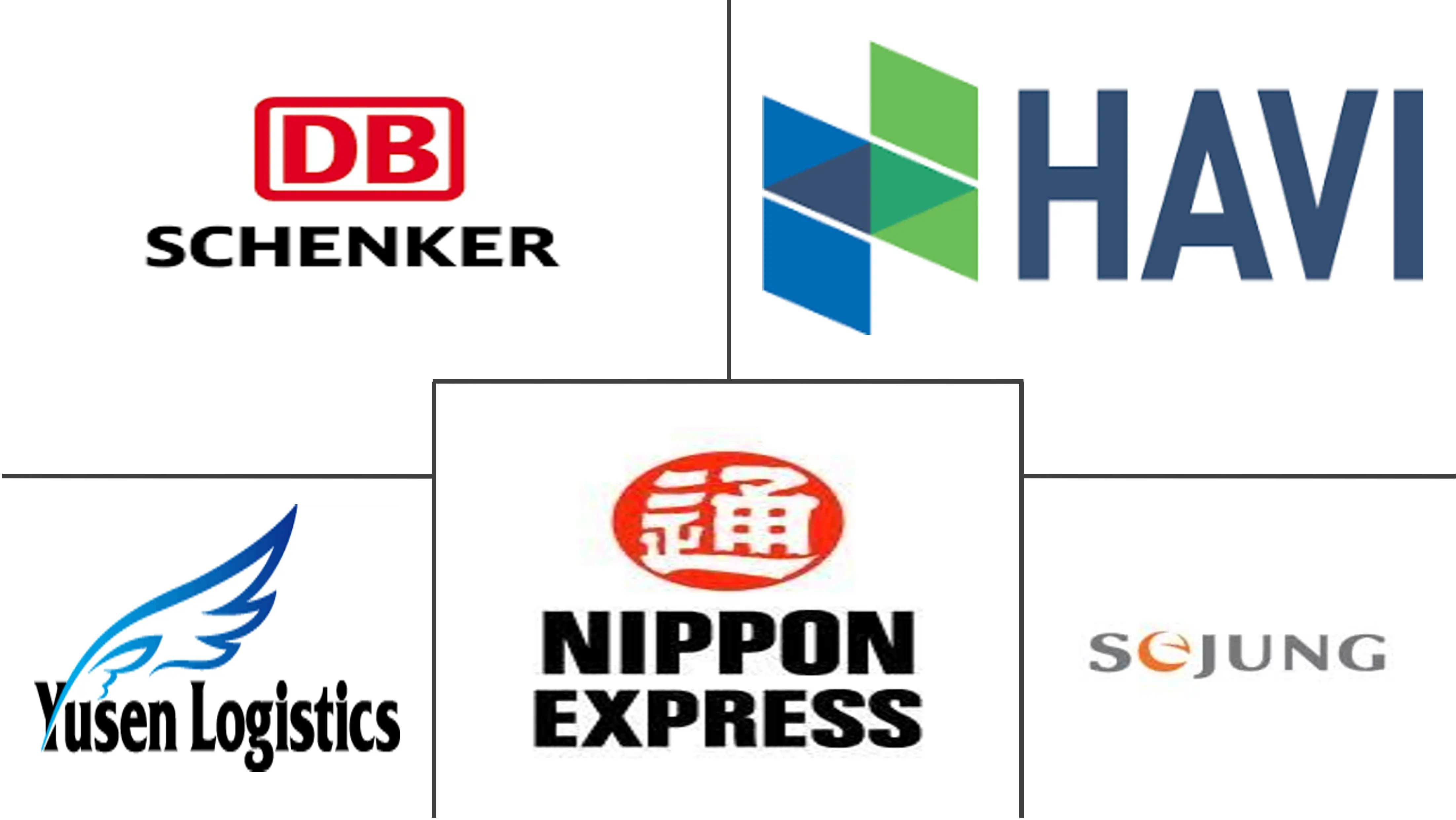Halal Logistics Market Size and Share
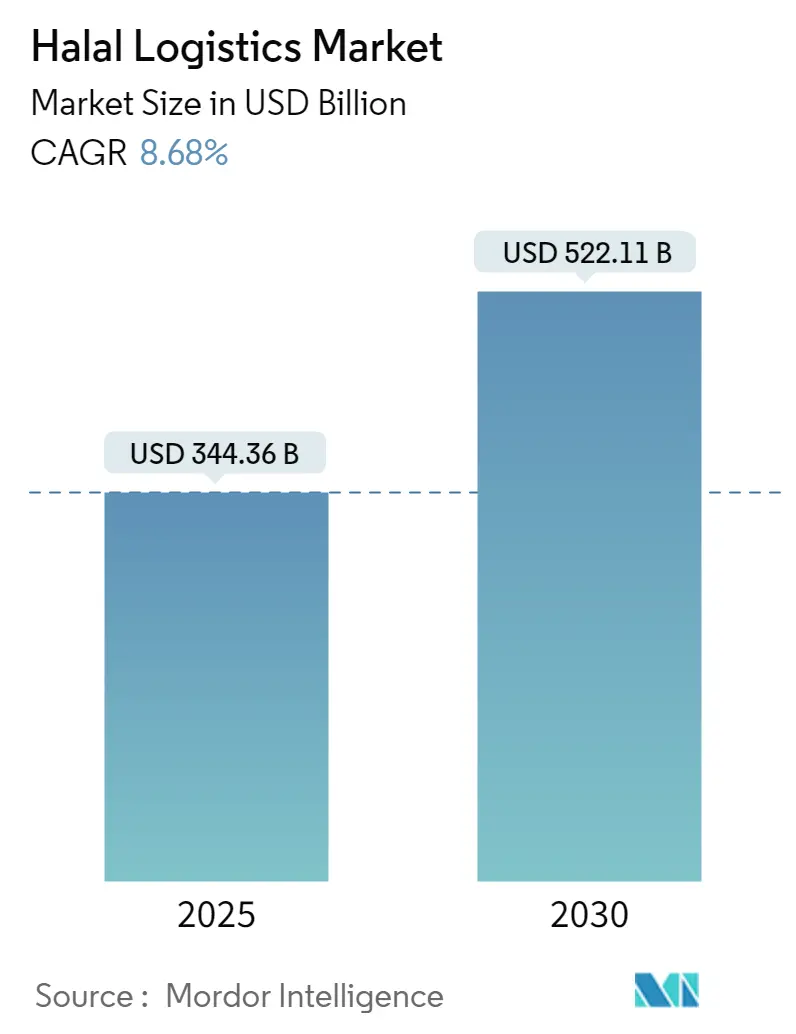
Halal Logistics Market Analysis by Mordor Intelligence
The Halal Logistics Market size is estimated at USD 344.36 billion in 2025, and is expected to reach USD 522.11 billion by 2030, at a CAGR of 8.68% during the forecast period (2025-2030).
The halal logistics market continued its upward trajectory, fueled by a rising global Islam population and an escalating demand for halal-certified products spanning sectors like food, pharmaceuticals, and cosmetics. Data from Malaysia's Department of Islamic Development (JAKIM) highlighted that Malaysia's halal product exports hit USD 11.2 billion in the initial nine months of 2024, marking a 7.5% uptick from the previous year. To cater to this surge, the logistics segment of the supply chain adapted, emphasizing certified handling, storage, and transportation. Concurrently, halal markets intensified efforts to regulate and promote halal logistics frameworks, bolstering consumer trust and ensuring market transparency.
In November 2024, Vietnamese Prime Minister Pham Minh Chinh embarked on a diplomatic tour, visiting the United Arab Emirates (UAE), Saudi Arabia, and Qatar. These strategic visits were designed to enhance Vietnam's economic footprint in the Middle East, with a particular emphasis on Halal-compliant products. This initiative is a direct response to the burgeoning USD 2.7 trillion global Halal market, fueled by an expanding Muslim consumer demographic. Through the establishment of trade partnerships, streamlining of supply chains, and heightened promotion of certified halal products, Vietnam is poised to strengthen its influence in the international halal sector.
Meanwhile, the EU Halal Food initiative is propelling significant growth in the halal logistics sector across the European Union. By October 2024, data from the European Commission revealed that halal-certified products accounted for roughly EUR 42 billion (USD 46.8 billion) of the EU's food export value. This significant contribution underscored the necessity for dedicated halal-compliant logistics hubs along major trade routes. These hubs played a crucial role in catering to the surging demand from Muslim-majority markets, especially in Southeast Asia and the Middle East. Europe's strategic integration of halal standards into its broader supply chain frameworks solidified its position as a key player in the global halal logistics market.
Global Halal Logistics Market Trends and Insights
Government Support for Halal Certification and Trade
Government support for halal certification and trade is significantly shaping the halal logistics market, especially in countries with large Muslim populations. For example, Malaysia, a long-time leader in halal certification, is not only investing in but also enhancing its halal certification processes. The aim is to enable businesses to meet the growing demand for halal products, both domestically and internationally.
Looking to 2025, the Malaysian government forecasts a 7.5% increase in halal exports, driven by strong trade agreements and active measures to promote halal certification among local businesses. This rising government support is encouraging both producers and logistics providers to adopt halal-compliant practices, boosting the demand for specialized halal logistics services. To further this initiative, the Malaysian government has rolled out training programs and workshops, emphasizing the significance of halal certification and the necessary steps to obtain it. They are also partnering with global halal certification bodies to ensure worldwide recognition of Malaysian halal standards, facilitating smoother exports of halal products.
Similarly, the Gulf Cooperation Council (GCC) countries are making strides in this direction. As of February 2024, the UAE is rolling out a comprehensive policy framework aimed at standardizing and promoting halal certification. Their focus isn't limited to food; it encompasses pharmaceuticals, cosmetics, and a wide range of consumer goods. By emphasizing halal certification, these governments are broadening international market access for their businesses, particularly in regions like Southeast Asia and Africa, where demand for halal-certified products is strong.
As a result, logistics companies handling halal-certified goods are broadening their service offerings, aligning with the increased certification and quality control standards of this expanding market. To facilitate this growth, the UAE government has set up dedicated halal zones and logistics hubs, equipped with advanced facilities to ensure adherence to halal standards, thus boosting the efficiency and trustworthiness of halal logistics services.
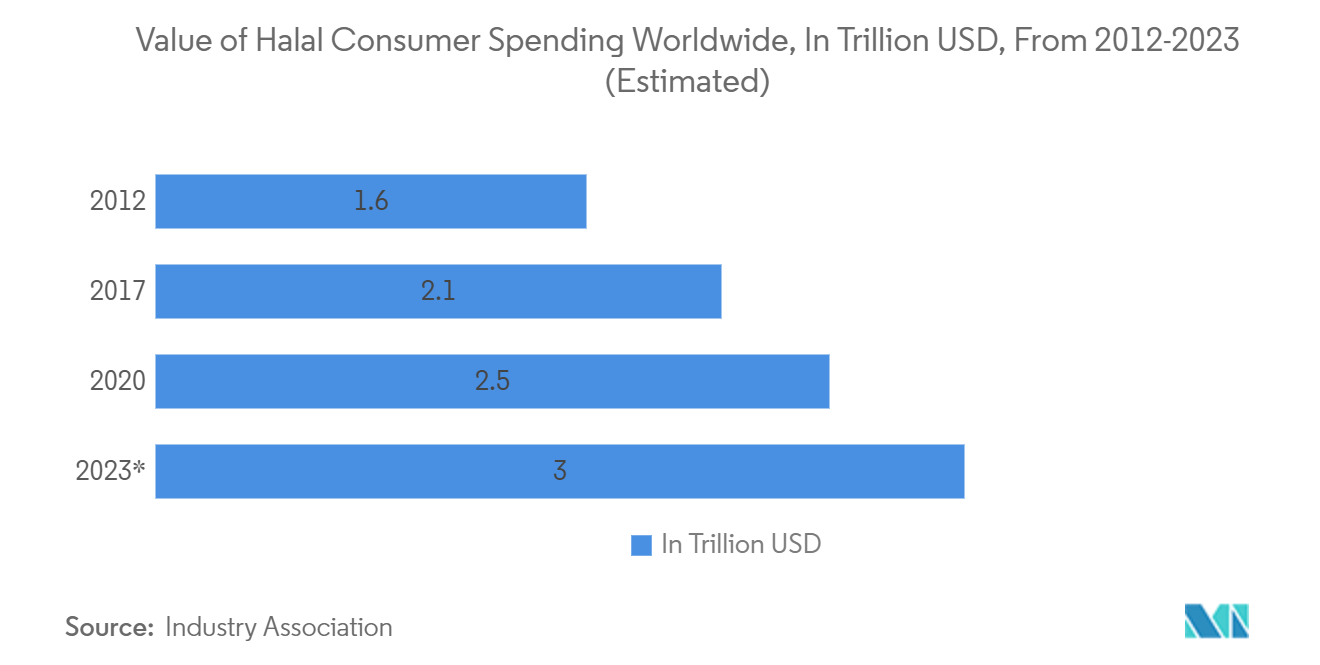
Growth of Halal E-Commerce and Cross-Border Logistics
The booming halal e-commerce and rising demand for cross-border logistics solutions are significantly driving the halal logistics market. In regions like the Middle East and Southeast Asia, governments are promoting digital platforms to enhance the global trade of halal-certified products. The UAE government, in particular, has rolled out multiple initiatives to elevate halal e-commerce, focusing on sectors like food and healthcare, and addressing the growing global consumer interest in halal products.
By 2024, e-commerce platforms in the UAE, with government backing, have seen a notable uptick in halal-certified products, cementing the UAE's role as a key logistics hub for cross-border halal goods. The rise of halal e-commerce is closely linked to the escalating demand for effective cross-border logistics, vital for the worldwide distribution of halal products. Southeast Asian governments, led by Malaysia, are implementing policies to facilitate halal product exports, making it easier for businesses to access global markets online.
The Malaysian government is pushing for a strong logistics framework, emphasizing air and sea freight, to enhance the export of halal-certified products. As of September 2024, Malaysia is experiencing a notable uptick in cross-border halal trade, with e-commerce exports making significant inroads into European and African markets. This trend highlights the growing demand for specialized logistics services that not only uphold halal certification standards but also ensure timely cross-border deliveries.
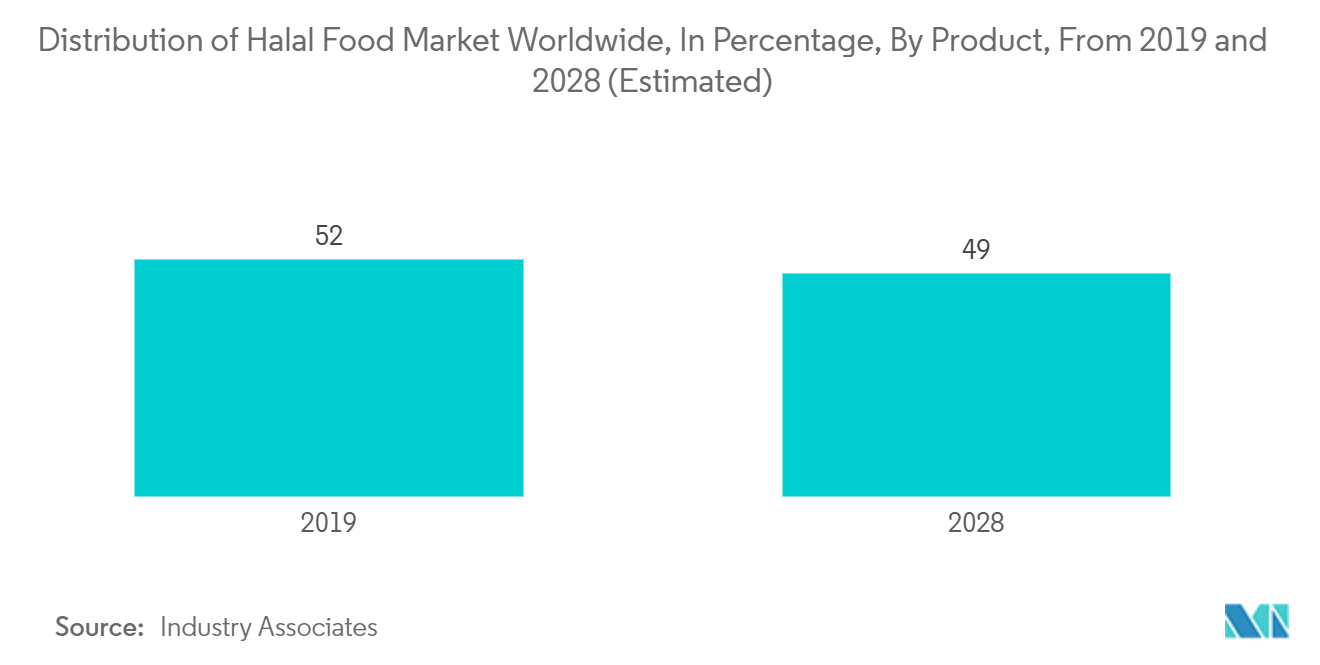
Competitive Landscape
The halal logistics market is moderately concentrated. While halal logistics have already gained a considerable foothold in Muslim-dominated countries, in countries with a more heterogeneous population, providers of halal logistics are targeting Islamic associations and groups. Halal logistics providers are rigorously ensuring that the people involved in the supply chain understand the technical requirements and regulatory aspects to deliver halal products to the markets safely. The majority of the companies have focused on establishing subsidiaries in developing regions. Strategies include product launches, collaborations with key players, partnerships, and mergers and acquisitions.
Halal Logistics Industry Leaders
-
Nippon Express
-
DB Schenker
-
HAVI
-
Yusen Logistics (americas) Inc.
-
Sejung Corporation
- *Disclaimer: Major Players sorted in no particular order
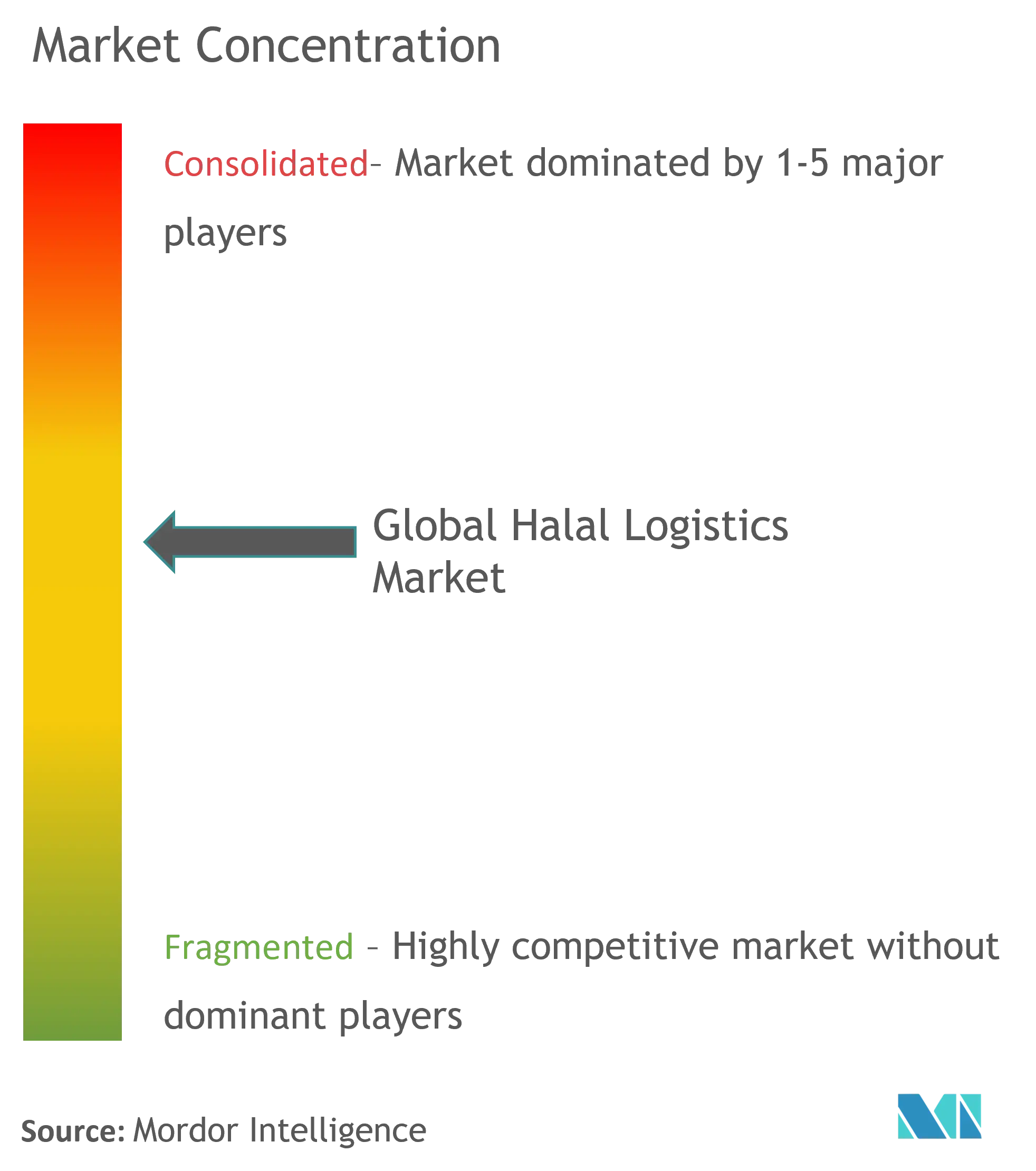
Recent Industry Developments
- September 2024: According to the Malaysian Government, the country stands to gain from a potential MYR 4 billion (USD 890.85 million) investment in the halal industry from China. This substantial investment opportunity surfaced after discussions on Tuesday between him, the Malaysian delegation, and prominent figures in the Chinese halal industry.
- May 2024: Nippon Express Co., Ltd., a subsidiary of NIPPON EXPRESS HOLDINGS, INC., has secured halal logistics certification from the Nippon Asia Halal Association (NAHA). The certification, effective 30th April 2024, was designated for the Fukuoka Chuo Logistics Center, which is a segment of its Fukuoka Air Service Branch.
Global Halal Logistics Market Report Scope
Halal logistics is the process of managing the transportation of food products across the supply chain complying with the Halal standards implemented. This report offers a complete analysis of the Global Halal Logistics Market, including a market overview, market size estimation for key segments and emerging trends by segments, and market dynamics. The report also offers the impact of COVID-19 on the market.
Halal Logistics Market is Segmented By Type (Storage and Inventory Management, Transportation, Other (Monitoring Components, Software, Services, etc.)), By End-User Industry (Food and Beverages, Chemicals, Cosmetic / Personal Care, Pharmaceuticals, and Others), and By Geography (North America, Latin America, Europe, Asia Pacific, and Middle East & Africa). The report offers Global Halal Logistics Market sizes and forecasts in value (USD billion) for all the above segments.
| Storage and Inventory Management | |
| Transportation | Road |
| Rail | |
| Sea | |
| Air | |
| Others (Monitoring Components, Software, Services, etc.) |
| Food and Beverages |
| Chemicals |
| Cosmetic / Personal Care |
| Pharmaceuticals |
| Others |
| North America |
| Latin America |
| Europe |
| Asia Pacific |
| Middle East & Africa |
| By Type | Storage and Inventory Management | |
| Transportation | Road | |
| Rail | ||
| Sea | ||
| Air | ||
| Others (Monitoring Components, Software, Services, etc.) | ||
| By End-User Industry | Food and Beverages | |
| Chemicals | ||
| Cosmetic / Personal Care | ||
| Pharmaceuticals | ||
| Others | ||
| By Geography | North America | |
| Latin America | ||
| Europe | ||
| Asia Pacific | ||
| Middle East & Africa | ||
Key Questions Answered in the Report
How big is the Halal Logistics Market?
The Halal Logistics Market size is expected to reach USD 344.36 billion in 2025 and grow at a CAGR of 8.68% to reach USD 522.11 billion by 2030.
What is the current Halal Logistics Market size?
In 2025, the Halal Logistics Market size is expected to reach USD 344.36 billion.
Who are the key players in Halal Logistics Market?
Nippon Express, DB Schenker, HAVI, Yusen Logistics (americas) Inc. and Sejung Corporation are the major companies operating in the Halal Logistics Market.
Which is the fastest growing region in Halal Logistics Market?
Asia-Pacific is estimated to grow at the highest CAGR over the forecast period (2025-2030).
Which region has the biggest share in Halal Logistics Market?
In 2025, the Europe, Middle East, and Africa accounts for the largest market share in Halal Logistics Market.
What years does this Halal Logistics Market cover, and what was the market size in 2024?
In 2024, the Halal Logistics Market size was estimated at USD 314.47 billion. The report covers the Halal Logistics Market historical market size for years: 2020, 2021, 2022, 2023 and 2024. The report also forecasts the Halal Logistics Market size for years: 2025, 2026, 2027, 2028, 2029 and 2030.
Page last updated on:
Halal Logistics Market Report
Statistics for the 2025 Halal Logistics market share, size and revenue growth rate, created by Mordor Intelligence™ Industry Reports. Halal Logistics analysis includes a market forecast outlook for 2025 to 2030 and historical overview. Get a sample of this industry analysis as a free report PDF download.
